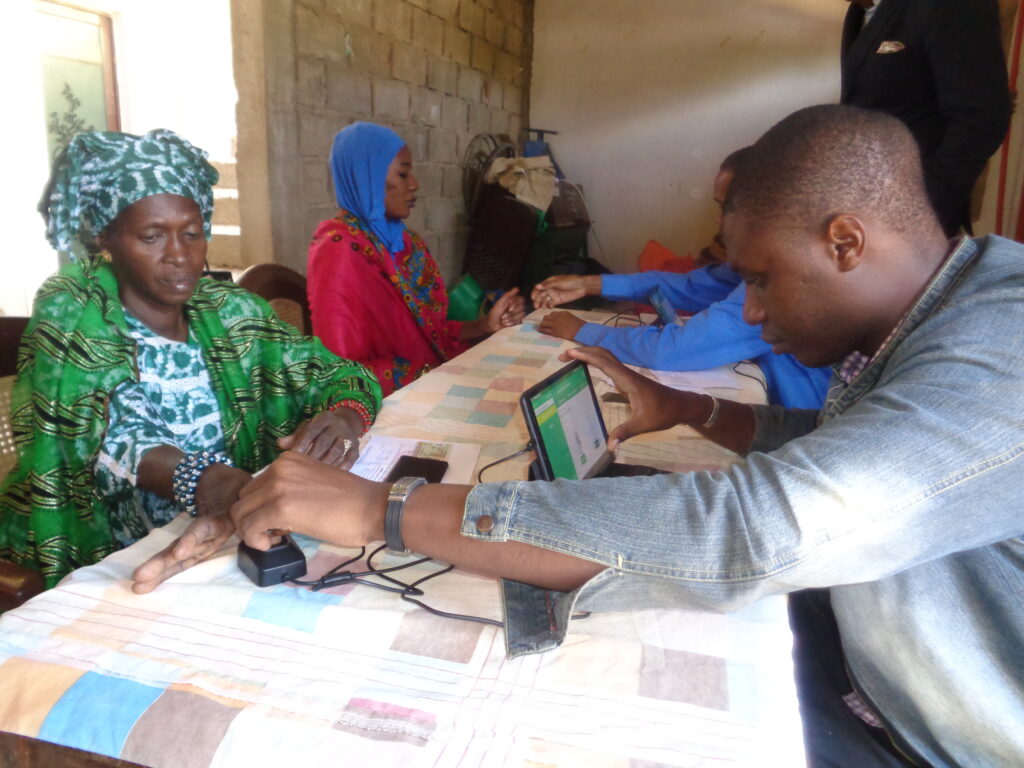From Silicon Valley to rural villages, Henrik Esbensen has spent his career asking one big question: how can technology help people change their own lives? As Co-Founder and CEO of DreamStart Labs, Henrik leads the team behind DreamSave, a mobile app helping savings groups in more than 25 countries strengthen recordkeeping, access opportunities, and plan for the future. With a background in advanced computing and years of experience building products for startups and global companies, Henrik now focuses on creating tools that work in the developing world—where connectivity is patchy, devices are shared, and trust is built face-to-face. In this conversation, Henrik shares what he’s learned from bringing digital solutions into community-led savings groups, the challenges of scaling technology without losing human connection, and his vision for the future of financial inclusion.
Journey & Motivation
Moving from Silicon Valley to working with communities around the world is a big leap. Was there a moment or experience that confirmed you were on the right path?
Yes, there were actually many such experiences. Every time I visit a savings group, meet the savings group members, and listen to what they are sharing about the impact the group--and DreamSave--has made on their lives is a confirmation that we are on the right path. This brings me immense joy. The work has meaning, it has a purpose, and it is indeed changing people’s lives for the better. I’ve had the privilege of working in Silicon Valley my entire life, and I’ve truly enjoyed playing with a lot of really cool stuff. It has been fun, enjoyable, and rewarding in many ways. But at the end of the day, it lacks deeper meaning and true purpose. Most of the technology doesn’t really improve anyone’s life – at least not at a level that’s even remotely comparable to what we’re doing now.
DreamStart Labs & the DreamSave Story
What changes have you seen in how savings groups operate once they start using DreamSave? Any favorite stories from various contexts?
Lots! We often hear that using the DreamSave app cuts the meeting time in half. The group members can now use the saved time to attend their businesses and many other activities. The ease of the shareout computation is perhaps the single most popular benefit: what used to take anywhere from several hours to three days (!) is now done immediately, i.e., the computation is instantaneous. And it’s free of errors. Group members also consistently report an increased level of trust in the financial management of the group. Unfair practices within the group are greatly reduced since the level of transparency is much higher. Individual members get SMS receipts for their personal transactions on their feature phones. It is very hard for leading group members to “play games” with the numbers now.
How do you make sure the technology works for communities with different needs, languages, and levels of digital access?
Great question, and there are indeed many big challenges to overcome. DreamSave supports around 25 languages natively, and we are constantly adding more. It also works completely offline – you can use the app forever without ever having an internet connection. But when you do, your data is automatically backed up to the cloud. We have spent a lot of engineering hours minimizing the amount of data being sent, so that the backup cost is minimal. We have also invested heavily in developing the best possible user experience, making it as easy as possible for everyone to use the app. And then we work closely with our NGO partners to provide training and technical support for the groups on their use of DreamSave.
Lessons from Different Contexts
What have been some of the biggest challenges in bringing a digital tool into what is often a very trusted, face-to-face process?
It is indeed all about trust. Initially, some people just don’t trust the technology. That’s natural – it’s all new and unknown. So sometimes, some groups are hesitant to use the app at first. But then, as people use the app and see the benefits, trust is gained and very quickly, they trust the app more than the paper ledger book. Users often tell us that when using the app, there is much less conflict within the group, i.e., much fewer arguments over who gets loans, for how much, etc. That’s because using the app makes it much harder for some group members to dominate and treat other members unfairly, as mentioned earlier.
For the very same reason, some group leaders who may have benefitted from “playing the game” in the past have been hesitant to adopt the app.
It doesn’t happen too often, but sometimes there’s a misalignment between an NGO’s digitization objective and the NGO field staff’s personal interest. For example, if field staff are compensated based on the number of field visits made to support groups, but the need for support visits is reduced due to digitization, then the NGO staff may naturally be hesitant to promote digitization. But this should not be surprising. In general, the introduction of new technology often requires corresponding changes to organizational processes and procedures. So the compensation models for NGO staff supporting savings groups need to be adapted to account for digital rather than paper-based groups.
How have savings group members influenced or shaped the features in DreamSave?
At DreamStart Labs, we do not develop technology FOR people. We develop technology WITH people. From the very early days of developing DreamSave, we involved the future end users. We discussed the app functionality with end users before a single line of code had been written. We used paper mockups of screen layouts. We observed how end users interacted with the paper prototypes. Based on what we learned, we refined the app iteratively, from the paper prototypes through very simple initial app versions to the full app. This required many trips to Tanzania, bringing along experts in human centered design (UI/UX). We spent years, and we spent millions. But that’s exactly why the app works.
Looking Ahead
In the DSG Hub space, we talk often about moving from “pilots to progress.” What do you think it will take for digital savings solutions to scale while keeping their community focus?
Great question. We just discussed the business issues. But from a purely technical standpoint, how can we achieve this goal? I don’ think that NGO- and/or country-specific solutions is the answer. That’s too expensive and difficult to scale. Instead, a single solution should be configurable to meet local needs. The configuration should be user-controlled through, say, a web interface, and should not require rebuilding the software. This “many-in-one” approach should be able to achieve global scale while at the same time meeting bespoke local needs.
Community & Collaboration
What role can tech providers, NGOs, and governments each play in making digital savings groups the norm rather than the exception?
I think that tech providers and NGOs should focus on consolidation and collaboration, as discussed earlier. And then I think we should take much bigger chances. We should make bigger and bolder bets. If we consolidate and collaborate, we can afford exploring the long shots, for example, voice-driven apps to overcome the literacy barrier, even for low-resource languages. Bolder bets mean higher risk of failures, but I don’t think we can afford to not accept that risk. Small steps are just too slow. The last decade is evidence of that.
In general, governments could help by not making it harder to provide financial inclusion than it already is. It seems to me that governments should welcome financial inclusion, provided of course that it’s done ethically, with dignity and in a manner which is truly beneficial for the recipients. However, I have noticed that broadly speaking, some of the countries in which the needs are the greatest are the same ones in which the government makes things hard. They do so by implementing requirements which are very difficult and/or very expensive, to comply with. One example of this is countries requiring that the data of their citizens must physically reside within their country, while at the same time, the country doesn’t have the data centers needed to meet this requirement.
Lightning Round
- Paper ledger or digital app? Trick question, I think? ☺
- Work from anywhere or work from an office? Work from anywhere.
- Morning person or night owl? Morning person.
- Favorite place you’ve traveled for work? Rwanda.
- One tool or app you can’t live without? Chat-GPT.
Finish the Sentence
- “The future of savings groups is…” most definitely digital.
- “One lesson I’ve learned from working with savings groups is…” that talent is everywhere but opportunity is not.




